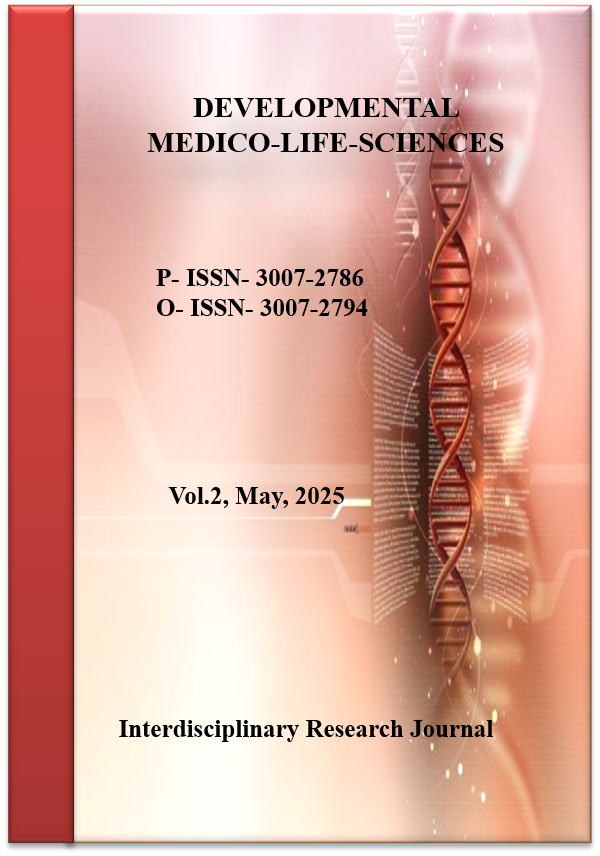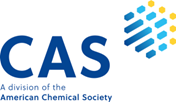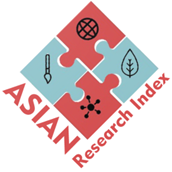Prevalence of Polycystic Ovary Syndrome (PCOS) and Its Association with Metabolic Syndrome in Reproductive-Aged Women: A Cross-Sectional Study
PCOS and Metabolic Syndrome in Reproductive-Aged Women
DOI:
https://doi.org/10.69750/dmls.02.05.0131Keywords:
PCOS, Metabolic syndrome, Insulin resistance, Obesity, Women, CardiovascularAbstract
Background: Women of reproductive age are vulnerable to the prevalent endocrine disorder referred to as polycystic ovarian syndrome (PCOS). It is often associated with metabolic syndrome. The existence of these two diseases markedly elevates susceptibility to cardiovascular disease and type 2 diabetes. Despite the significant incidence of obesity and metabolic disorders in the region, there is a lack of reliable information about South Asian women, even as these conditions become more prevalent globally.
Objectives: To The objectives of this study were to determine the prevalence of PCOS among women of reproductive age and to evaluate its association with metabolic syndrome.
Methods: This cross-sectional study was conducted in the obstetrics and gynecology department of several tertiary care hospitals in Pakistan, from January 2024 to January 2025. One hundred women aged 18 to 40 were systematically recruited. Metabolic syndrome was characterized according to the NCEP ATP III criteria, but polycystic ovarian syndrome (PCOS) was diagnosed based on the Rotterdam 2003 guidelines. Data about anthropometric, biochemical, clinical, and sociodemographic factors were gathered. Statistical analysis was conducted using SPSS version 25, using logistic regression to compute 95% confidence intervals and odds ratios (ORs).
Results: Among the patients, 29% were diagnosed with polycystic ovarian syndrome (PCOS). 58.6% of women with PCOS had metabolic syndrome, in contrast to 21.1% of those without the condition (p < 0.001). In women with PCOS, the predominant abnormalities were central obesity (79.3%), elevated fasting glucose levels (37.9%), and decreased high-density lipoprotein (62.0%). Polycystic ovary syndrome (PCOS) increased the likelihood of developing metabolic syndrome by almost fourfold, as shown by multivariate logistic analysis (OR = 3.2; 95% CI: 1.4-7.1; p = 0.005).
Conclusion: metabolic syndrome is significantly correlated with polycystic ovarian syndrome (PCOS), prevalent among women of reproductive age. To mitigate the future risk of diabetes and cardiovascular issues in this vulnerable population, consistent screening, timely lifestyle modifications, and preventive measures are essential.
Downloads
References
Giri A, Baniya R, Neupane D, Pokharel K, Basnet A. Metabolic syndrome among patients with polycystic ovarian syndrome: a descriptive cross-sectional study. J Nobel Med Coll. 2022;11(2):33–9. doi:10.3126/jonmc.v11i2.44246.
Sanchez Garrido MA, López Bonillo MJ, Fernández Sánchez M, et al. Metabolic dysfunction in polycystic ovary syndrome: an update. Endocrinol Metab Clin North Am. 2020;49(2):241–59. doi:10.1016/j.ecl.2019.11.001.
Lin T, Wang Y, Liu J, et al. Changes in the global burden of polycystic ovary syndrome from 1990 to 2021: a GBD study. Reprod Health. 2025;22(1):16. doi:10.1186/s12978-025-02016-y.
Meng Y, Li X, Gao Y, et al. Global burden of polycystic ovary syndrome among women of reproductive age: temporal trends and projections. Front Public Health. 2025;13:1514250. doi:10.3389/fpubh.2025.1514250.
Wang J, Zhou H, Chen D, et al. Evolving global trends in PCOS burden from 1990 to 2021. Front Endocrinol (Lausanne). 2025;16:1569694. doi:10.3389/fendo.2025.1569694.
Wen X, Wang Y, Lin Q, et al. Metabolic characteristics of different PCOS phenotypes: a cross-sectional analysis. Front Endocrinol (Lausanne). 2024;15:1370578. doi:10.3389/fendo.2024.1370578.
Fu L, Zhang X, Li Y, et al. The association between polycystic ovary syndrome and metabolic syndrome: insights from clinical data. Reprod Sci. 2023;30(4):987–95. doi:10.1007/s43032-022-00864-8.
Kaur R, Sharma S, Gupta P. Evaluation of potential association of metabolic syndrome in women with polycystic ovary syndrome. Middle East Fertil Soc J. 2024;29(1):11. doi:10.1186/s43043-024-00170-0.
Dumesic DA, Oberfield SE, Stener-Victorin E, et al. Polycystic ovary syndrome as a plausible evolutionary model: metabolic and clinical characteristics and management. Reprod Biol Endocrinol. 2022;20(1):78. doi:10.1186/s12958-021-00878-y.
Guo L, Chen Y, Wang H, et al. The risks of polycystic ovary syndrome and diabetes vary by ethnicity: a cohort study. Diabetes Care. 2021;44(6):e129–30. doi:10.2337/dc21-0132.
Ernest DK, Smith J, Brown A, et al. Prevalence of PCOS features in the United States population. J Clin Endocrinol Metab. 2025;110(3):563–74. doi:10.1210/clinem/dgaa456.
Ilagan Vega MKC, Santos GM, García LF. A bibliometric analysis of polycystic ovary syndrome study trends in Southeast Asia. J Obstet Gynaecol Res. 2022;48(1):1–12. doi:10.1016/j.jog.2022.06.011.
Osibogun O, Mancini J, Gbadamosi O. Polycystic ovary syndrome and cardiometabolic risk: contemporary overview. Semin Reprod Med. 2020;38(2):100–7. doi:10.1055/s-0039-1697999.
Chen Q, Liu R, Wang J, et al. PCOS burden in East and Southeast Asia: a spatiotemporal assessment. BMC Public Health. 2025;25:10723. doi:10.1186/s12889-025-10723-z.
Verywell Health. PCOS facts and statistics: prevalence and complications [Internet]. 2022 Sep 19 [cited 2025 Aug 31]. Available from: https://www.verywellhealth.com.
Wikipedia contributors. Polycystic ovary syndrome [Internet]. 2025 Aug 17 [cited 2025 Aug 31]. Available from: https://en.wikipedia.org/wiki/Polycystic_ovary_syndrome.
GBD 2021 data: aging burden of PCOS disability-adjusted life years. Reprod Health. 2025;22:16.
Wikipedia contributors. Metabolic syndrome [Internet]. 2025 Jul [cited 2025 Aug 31]. Available from: https://en.wikipedia.org/wiki/Metabolic_syndrome.
International Diabetes Federation. WHO/IDF consensus on metabolic syndrome definitions. Brussels: IDF; 2006.
Yasmin K. Cardiometabolic risk factors in urban South Asian women: focus on metabolic syndrome prevalence. arXiv [Preprint]. 2024. doi:10.48550/arXiv.2412.06850.
Salman Hosain AKM, Kabir MH, Kabir IE. PCONet: a CNN architecture for detecting PCOS from ultrasound images. arXiv [Preprint]. 2022. doi:10.48550/arXiv.2210.00407.
Gupta A, Shetty S, Joshi R, Laban RM. Machine learning methods in PCOS diagnosis: boosting ensemble comparison. arXiv [Preprint]. 2022. doi:10.48550/arXiv.2201.00418.
Shah SP, Mamun A, Soumma SB, Ghasemzadeh H. Enhancing metabolic syndrome prediction with balanced ML and counterfactuals. arXiv [Preprint]. 2025. doi:10.48550/arXiv.2504.06987.
Wikipedia contributors. Obesity and fertility: PCOS link [Internet]. 2025 [cited 2025 Aug 31]. Available from: https://en.wikipedia.org/wiki/Polycystic_ovary_syndrome#Obesity_and_fertility.
Wikipedia contributors. Epidemiology of metabolic syndrome [Internet]. 2025 [cited 2025 Aug 31]. Available from: https://en.wikipedia.org/wiki/Metabolic_syndrome.
Tanveer M, et al. Effectiveness of a school-based physical activity intervention on overweight and obesity among children and adolescents in Pakistan. PLoS One. 2025;20(2):e0317534. doi:10.1371/journal.pone.0317534.
Tanveer M, et al. Associations of 24-h movement behaviour with overweight and obesity among school-aged children and adolescents in Pakistan: an empirical cross-sectional study. Pediatr Obes. 2025;20(2):e13208. doi:10.1111/ijpo.13208.






















